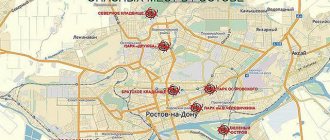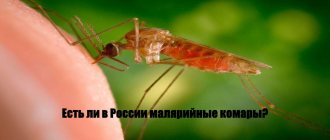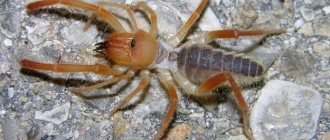The risk of contracting tick-borne encephalitis while in a tick habitat remains throughout the warm period of the year, but the likelihood of getting bitten by an infected tick is much higher in endemic regions. Let's find out which regions of the Russian Federation are endemic for tick-borne encephalitis, and which of them are the most dangerous during the period of tick activity.
An area endemic for tick-borne encephalitis is an area in whose ecosystem the causative agent of tick-borne encephalitis is constantly present, and almost every season there are cases of encephalitis in people bitten by ticks in this region.
The carriers of encephalitis are ixodid ticks. The endemicity of a region is formed as follows: ticks and warm-blooded animals living in this region regularly become infected with the virus from each other and become carriers of the disease. In this case, neither ticks nor animals die from encephalitis, but are only intermediate hosts of the virus.
This virus simply exists in their bodies and is passed on from generation to generation. But if an infected tick bites a person, the person in most cases becomes seriously ill. The tick can also infect farm animals, such as cows. If a person drinks milk from an infected cow, he will also get encephalitis.
Symptoms
Symptoms of encephalitis include:
- headache;
- vomit;
- nausea;
- aches and pain in the joints;
- high body temperature (above 38 degrees Celsius);
- confusion;
- drowsiness;
- disorientation;
- convulsions;
- changes in personality behavior.
Not in all cases, but still, photophobia, loss of vision, neck stiffness, involuntary movements of the head, limbs, body, and insemination of body parts may also be noted. Sometimes you can experience anxiety, delusions, paranoia, and hallucinations.
Initially, the patient may seem like just a person who has the flu. But a change in his mental background already indicates that it is worth sounding the alarm and urgently calling an ambulance.
Are you experiencing symptoms of encephalitis?
Only a doctor can accurately diagnose the disease. Don't delay your consultation - call
Ticks in the Ural Federal District (UFD)
The Ural Federal District consists of 6 constituent entities of the Russian Federation. Three areas are endemic for tick-borne encephalitis, namely:
- Tyumen region.
- Sverdlovskaya.
- And Chelyabinsk region.
At the same time, no encephalitis ticks were recorded in the Yamalo-Nenets Autonomous Okrug. This county is not endemic.
Two areas are considered endemic.
Khanty-Mansiysk Autonomous Okrug
19 administrative territories are recognized as endemic areas:
- Sovetsky district;
- Nefteyugansk;
- Nizhnevartovsk;
- October;
- Kondinsky;
- Khanty-Mansiysk;
- Surgutsky;
- as well as the cities of Yugorsk, Urai, Pyt-Yakh, Surgut, Pokachi, Nefteyugansk, Langepas, Nizhnevartovsk, Kogalym, Megion, Nagan and Khanty-Mansiysk.
Kurgan region
In the Kurgan region, 19 out of 26 administrative territories are recognized as endemic areas. Areas that are endemic for tick-borne encephalitis:
- Yurgamyshsky;
- Belozersky;
- Shchuchansky;
- Vargashinsky;
- Shumikhinsky;
- Dalmatovsky;
- Shatrovsky;
- Kargapolsky;
- Shadrinsky;
- Cathay;
- Chastoozersky;
- Ketovsky;
- Mokrousovsky;
- Kurtamyshsky;
- Mishninsky;
- Lebyazhevsky;
- Makushinsky;
- and cities - Shadrinsk and Kurgan .
In these areas, the presence of ticks carrying dangerous strains of encephalitis was detected.
Causes of encephalitis
Infectious encephalitis can occur due to:
- herpes virus;
- chickenpox virus;
- for no reason.
Post-infectious encephalitis occurs due to:
- measles;
- pigs;
- flu;
- chicken pox;
- rubella;
- cytomegalovirus;
- HIV;
- Epstein-Barr virus.
This happens because the immune system begins to produce antibodies that are supposed to fight the infection. But instead, the antibodies attack the brain, where inflammation forms. Why this reaction occurs is still not clear to scientists.
Autoimmune encephalitis develops when a person’s immune system mistakenly perceives brain substances as a threat. Why this happens is also unknown, but in some cases the starting point is a tumor.
Ticks in the Central Federal District (CFD)
The Central Federal District consists of 18 regions (subjects of the Russian Federation), which in turn are divided into districts and settlements. According to the Rospotrebnadzor document, areas of tick-borne encephalitis are considered endemic.
Ivanovo region
3 districts of the Ivanovo region, namely:
- Kineshemsky;
- Ivanovsky;
- Zavolzhsky districts.
Tver region
In the Tver region there are more dangerous areas - 12 out of 37. Encephalitis ticks were identified in the following areas:
- Torzhoksky;
- Oleninsky;
- Krasnokholmsky;
- Rameshkovsky;
- Maksatikhinsky;
- Vyshnevolotsky;
- Kashinsky;
- Nelidovsky;
- Konakovsky;
- West Dvinsky;
- Likhoslavlsky;
- Kalininsky.
Yaroslavl region
In the Yaroslavl region, 18 out of 23 districts are among the endemic tick-borne encephalitis:
- Poshekhonsky;
- Danilovsky;
- Uglichsky;
- Gavrilo-Yamsky;
- Rostovsky;
- Breitovsky;
- Nekouzsky;
- Rybinsky;
- Yaroslavsky;
- Myshkinsky;
- Bolsheselsky;
- Lyubimsky;
- Pervomaisky;
- Nekrasovsky;
- Breitovsky;
- Tutaevsky;
- as well as the cities of Rostov, Yaroslavl and Rybinsk.
Moscow region
In the Moscow region, only 2 out of 52 districts are considered dangerous for tick-borne encephalitis:
Ticks in the Central Federal District (CFD)
- Taldomsky;
- and Dmitrovsky districts.
- As for the Kostroma region, its entire territory is classified as an endemic zone.
Which areas of the Central Federal District are not included in the list of endemic tick-borne encephalitis :
- Belgorod region;
- Bryansk;
- Voronezh;
- Vladimirskaya;
- Kaluzhskaya;
- Lipetskaya;
- Ryazan;
- Orlovskaya;
- Tambovskaya;
- Smolenskaya;
- Tula;
- Moscow city.
Clarification! The status of an endemic area for tick-borne encephalitis is assigned if several cases of infection of residents after a tick bite are detected.
Ticks in the Northwestern Federal District (NWFD)
Treatment of encephalitis
During the treatment of encephalitis it is important:
- stop the infection process with antiviral drugs;
- monitor for any immediate complications, including fever, dehydration, epilepsy;
- prevent the development of long-term complications.
Most patients are hospitalized and placed in intensive care units. Oxygen masks are worn to help with breathing. The body is fed through feeding tubes.
For the infectious type of encephalitis, antiviral agents are used. The sooner drug therapy is prescribed, the lower the risk of death.
The post-infectious type of the disease is treated with corticosteroid drugs. High dosages are prescribed. The number of days of admission is determined depending on the severity of the disease and the general condition of the patient. Corticosteroids calm the immune system and reduce inflammation.
Autoimmune encephalitis is treated with:
- corticosteroids;
- plasmapheresis;
- immunoglobulin therapy.
Additionally, immunosuppressants may be prescribed.
Chronic encephalitis of the subacute type can only be resolved. In this case, death occurs within 1-2 years after diagnosis. In such situations, antiviral treatment is prescribed.
Possible complications
In some cases, if treatment was started on time, the person recovers and does not suffer any complications after suffering from encephalitis. If the patient was delivered in serious or moderate condition, then there is a high risk of acquiring:
- aphasia (problems with the speech apparatus);
- memory problems (the most common complication);
- difficulty concentrating;
- epilepsy;
- instability of mood and emotional background;
- problems with physical activity;
- personal and behavioral changes.
Ticks in the Northwestern Federal District (NWFD)
The Northwestern Federal District consists of 11 regions. And only two of them are not endemic for tick-borne encephalitis.
These are the Murmansk region and the Nenets Autonomous Okrug. The remaining areas are more or less dangerous. Therefore, residents in these areas should take extra care.
Regions and districts of the Northwestern Federal District that have the status of endemic tick-borne encephalitis.
The territories of the Pskov, Novogorod, Leningrad, Kaliningrad and Vologda regions are among the endemic, that is, potentially dangerous;
Komi Republic
In the Komi Republic, only 8 districts have this status;
- Kortkerossky;
- Syktyvdinsky;
- Ust-Vymsky;
- Koygorodsky;
- Sysolsky;
- Priluzsky;
- Ust-Kulomsky;
- city of Syktyvkar.
Arhangelsk region
The Arkhangelsk region consists of 25 administrative territories. 20 areas are considered endemic. This:
- Plesetsky;
- Shenkursky;
- Vilegodsky;
- Kotlassky;
- Nyandomsky;
- Vinogradovsky;
- Ustyansky;
- Kholmogorsky;
- Onega;
- Velsky;
- Kargopolsky;
- Lensky;
- Seaside;
- Verkhnetoyemsky;
- Pinezhsky;
- Krasnoborsky;
- Konoshsky;
- and the cities of Mirny, Koryazhma and Kotlas.
Republic of Karelia
The Republic of Karelia consists of 18 districts, and 13 of them are classified as endemic areas for tick-borne encephalitis.
- Olonetsky;
- Suoyarvsky;
- Belomorsky;
- Prionezhsky;
- Pryazhinsky;
- Kondopoga;
- Sortovalsky;
- Segezhsky;
- Lahdenpokhsky;
- Medvezhyegorsky;
- Pudozhsky;
- Pitkyaransky;
- and the city of Petrozavodsk along with its surroundings.
Regarding St. Petersburg itself, only 6 out of 18 districts are considered endemic for tick-borne encephalitis. This relatively low figure was achieved thanks to annual sanitary and epidemiological measures that help control the population of ticks infected with encephalitis and other dangerous infections.
Districts of St. Petersburg that are endemic for tick-borne encephalitis:
- Seaside;
- Pushkinsky;
- Kolpinsky;
- Petrodvortsovy;
- Krasnoselsky;
- Resort.
The remaining 18 administrative territories of St. Petersburg are relatively safe.
FAQ
Who is most at risk for encephalitis?
Encephalitis is a rare disease, but it can manifest itself in representatives of both sexes. According to statistics, it most often affects people with weakened immune systems.
Can the vaccine cause encephalitis?
There really are such cases. But the risk of getting sick from what you are vaccinated against is much higher than the risk of getting a complication such as encephalitis. Therefore, it is unreasonable to refuse vaccination.
Ticks in the Siberian Federal District (SFO)
The Siberian Federal District consists of 10 constituent entities. These territories are considered the most dangerous not only for tick-borne encephalitis, but also for Lyme disease (borreliosis), turrets and various fevers.
Important! You can find out more about ticks, their habitats and the infections they carry in the article “Tick bite: classification, danger to humans, effective means of protection”
In which areas of Siberia are encephalitis ticks found?
Krasnoyarsk region
Encephalitis ticks were found in 57 districts of the region, among them:
- Shushensky district;
- Achinsky;
- Sharypovsky;
- Balakhtinsky;
- Uyarsky;
- Berezovsky;
- Uzhursky;
- Birilyussky;
- Tyukhtensky;
- Bogotolsky;
- Turukhansky;
- Boguchansky;
- Taseevsky;
- Bolshemurtinsky;
- Sukhobuzimsky;
- Bolsheuluisky;
- Sayan;
- Dzerzhinsky;
- Rybinsky;
- Yeniseisky;
- Pirovsky;
- Emelyanovsky;
- Guerrilla;
- Ermakovsky;
- Novoselovsky;
- Idrinsky;
- Nizhneingashsky;
- Ilansky;
- Nazarovsky;
- Irbeysky;
- Motyginsky;
- Kazachinsky;
- Minusinsky;
- Kansky;
- Mansky;
- Karatuzsky;
- Kuraginsky;
- Kezhemsky;
- Krasnoturansky;
- Kozul districts;
- as well as the cities of Sosnovoborsk, Achinsk, Sharypovo, Bogotol, Nazarovo, Borodino, Minusinsk, Divnogorsk, Lesosibirsk, Yeniseisk, Krasnoyarsk, Kansk ;
- and the villages of Solnechny, Kedrovy, Zheleznogorsk and Zelenogorsk .
Omsk region
In the Omsk region, 16 out of 33 districts pose a potential danger, being endemic for tick-borne encephalitis. Districts:
- Ust-Ishimsky;
- Bolsherechensky;
- Tyukalinsky;
- Bolsheukovsky;
- Tevrizsky;
- Gorkovsky;
- Tarski;
- Znamensky;
- Sedelnikovsky;
- Kolosovsky;
- Sargatsky;
- Krutinsky;
- Omsk;
- Muromtsevsky;
- Nizhneomsky;
- and the city of Omsk.
Irkutsk region
In the Irkutsk region, 30 out of 36 districts are endemic for tick-borne encephalitis. This:
- Angarsk;
- Ekhirit-Bulagatsky;
- Brotherly;
- Osinsky;
- Balagansky;
- Nukutsky;
- Zhigalovsky;
- Bokhansky;
- Zalarinsky;
- Bayandaevsky;
- Ziminsky;
- Alarsky;
- Irkutsk;
- Shelekhovsky;
- Kazachinsky;
- Chunsky;
- Kachugsky;
- Cheremkhovsky;
- Kuytunsky;
- Usolsky;
- Nizhneudinsky;
- Ust-Udinsky;
- Olkhonsky;
- Ust-Ilimsky;
- Slyudyansky;
- Tulunsky;
- Taishet districts;
- as well as the cities of Sayansk , Irkutsk and Bratsk .
Novosibirsk region
In the Novosibirsk region, 23 districts are in the endemic zone for tick-borne encephalitis. Namely:
- Barabinsky district;
- Chulymsky;
- Bolotninsky;
- Cherepanovsky;
- Vengerovsky;
- Chanovsky;
- Iskitimsky;
- Ust-Tarsky;
- Kargatsky;
- Toguchinsky;
- Kolyvansky;
- Suzunsky;
- Kochenevsky;
- Northern;
- Krasnozersky;
- Ordynsky;
- Kyshtovsky;
- Maslyaninsky;
- Novosibirsk;
- Moshkovsky;
- as well as the cities of Ob, Berdsk and Novosibirsk.
The Republic of Khakassia
The Republic of Khakassia also suffers from ticks infected with encephalitis. In this Republic, 10 out of 13 areas are considered endemic:
Ticks in the Siberian Federal District (SFO)
- Askizsky district;
- Ordzhonikidzevsky;
- Beysky;
- Shirinsky;
- Bogradsky;
- Ust-Abakansky;
- Tashtypsky;
- as well as the cities of Sorsk, Abaza and Sayanogorsk.
Tyva Republic
In the Republic of Tyva, 13 subjects are recognized as endemic areas for tick-borne encephalitis, including:
- Dzun-Khimchinsky district;
- Kaa-Khemsky;
- Tere-Kholsky;
- Kyzylsky;
- Chedi-Kholsky;
- Pius-Khemsky;
- Chaa-Kholsky;
- Sut-Kholsky;
- Ulug-Khemsky;
- Tandinsky;
- Todzhinsky;
- Tes-Khemsky;
- as well as the city of Kyzyl .
Some regions of the Siberian Federal District have full-territorial status as endemic for tick-borne encephalitis without division into regions. These territories include:
- Tomsk region . The entire area is considered endemic.
- Kemerovo region . The situation is similar.
- Altai Territory and the Altai Republic . Ticks infected with encephalitis are found throughout the area.
Important! In the Siberian Federal District, all regions in one way or another belong to endemic territories.











